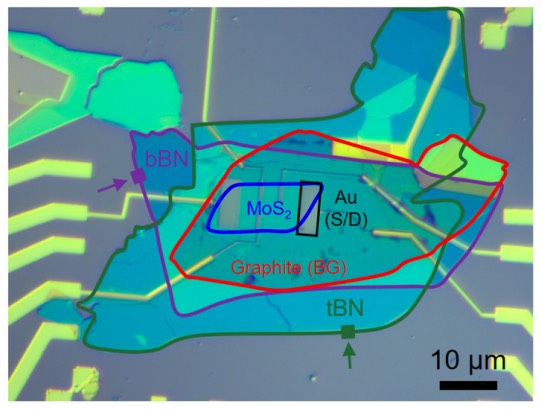Observation of weak localization in dual-gated bilayer MoS2
We investigate the magnetoresistance of a dual-gated bilayer MoS2 encapsulated by hexagonal boron nitride. At low magnetic fields (|B|<0.5T), we observe a negative magnetoresistance, which we identify as the weak localization effect. We determine both the phase coherence length and mean free path as a function of electron density and displacement field. Both characteristic lengths show a similar monotonic increase with electron density, while they are not affected by the displacement field. We further investigate the dephasing mechanism by measuring the temperature dependence of the phase coherence length. Our results suggest that when only the lower spin-orbit split bands (K↑, K′↓) contribute to transport is Coulomb scattering the dominant source of decoherence, while intervalley scattering seems not to play a relevant role in this regime. This observation is consistent with the picture of spin-polarized valleys (spin-valley locking), where the intrinsic spin-orbit coupling protects the spin states, rather than introducing an additional dephasing mechanism as in other materials.


